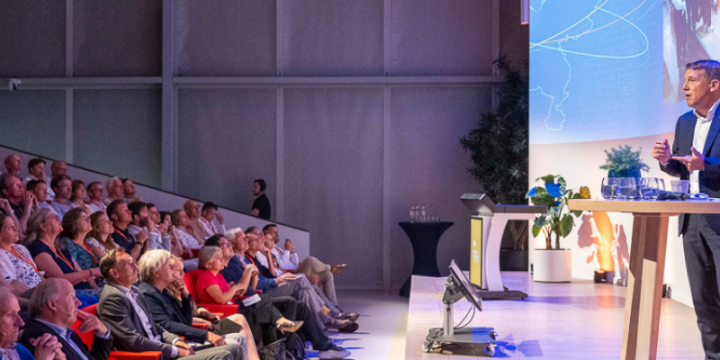A prosthesis that better aligns with the user’s physical load-bearing capacity – that is the goal of the project Personalized Load-Bearing Capacity for Bone-Anchored Lower-Leg Prosthesis Users, also known as Move2dMax. The project leverages sensor technology, data analysis, and biomechanical modeling to precisely tailor the load distribution on the prosthesis to the individual user. Holland High Tech funds the project through its strategic program on Medical Technology and the PPS Innovation Program, with co-funding provided by the Ministry of Defence. Twente University published an in-depth article about the project in its own TechMed Magazine.
Malte Asseln is an Assistant Professor in the research group Biomedical Device Design and Production, focussing on improving prosthetics and orthotics. With his new project Move2dMax, he wants to improve the lives of amputees by finding a more positive definition of how much load individual users’ prosthetics can endure.
Leg amputees with a bone-anchored prosthesis are typically told to be careful; Don’t put too much load on it or the bone may break, causing extreme problems. In other words: best not work out, or carry heavy things. The result is that lives almost literally come to a standstill; athletes cannot enjoy their sports, and soldiers who’ve served their country are often left sitting around at home, feeling useless.
Individual calculations
Malte Asseln and his colleague, professor Nico Verdonschot, want to change this ‘conservative approach’. Heading a consortium, they will soon start working on acquiring amputee data, using it to create an algorithm that can help define how much load each individual’s prosthesis can take. ‘It varies per person, and depends on factors such as age, bone quality, how much bone is amputated, and what kind of activities they want to engage in.’ All this data can be used to give more personalised advice. ‘It literally helps people with an amputation move to their max again,’ says Asseln, who’s love for rowing made him aware how delicate the human body can be.
The difficulty lies in defining the safe zones. ‘You want to know how far someone can go, but don’t want to risk pushing people to their bone’s breaking point.’ To ensure that safety, the team is working on a failsafe, a device that works as a buffer between the prosthetic and the bone. ‘This failsafe breaks once load on the leg reaches a critical point, saving the bone and anchor,’ explains Asseln.
Re-integratie
The project is a collaboration with Radboud University Medical Center, the Military Rehabilitation Center Aardenburg, and the TechMed Center. It is funded by Holland High Tech, the top sector that brings together companies, knowledge institutions, and government bodies to address societal challenges. The Ministry of Defence is a co-funder and interested in Move2dMax, as they want to offer injured soldiers the best possible recovery after an amputation. "And possibly even reintegration into the workforce. They may have lost a leg, but not their life," Asseln concludes.
Read the full article, including photos, in TechMed Magazine:
To the article





